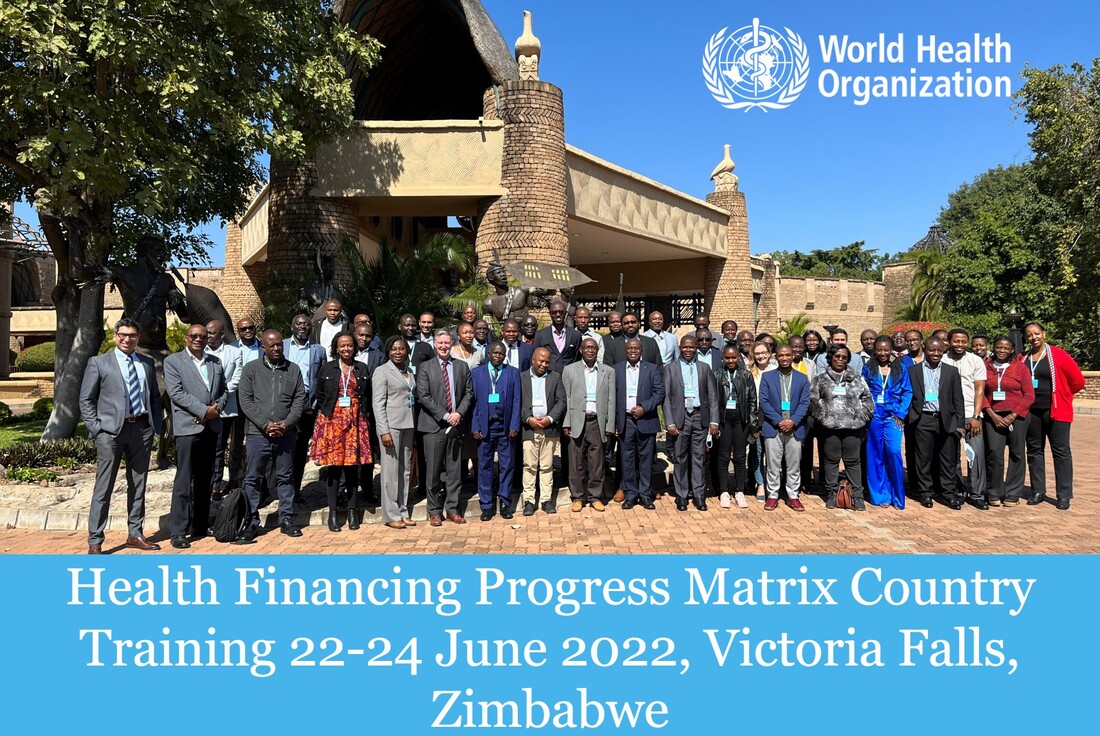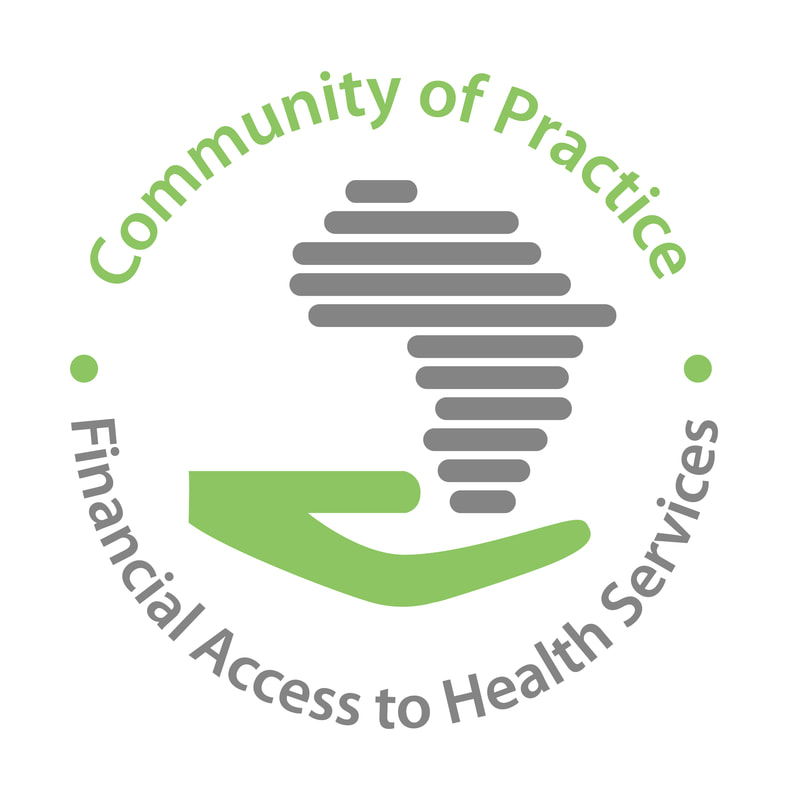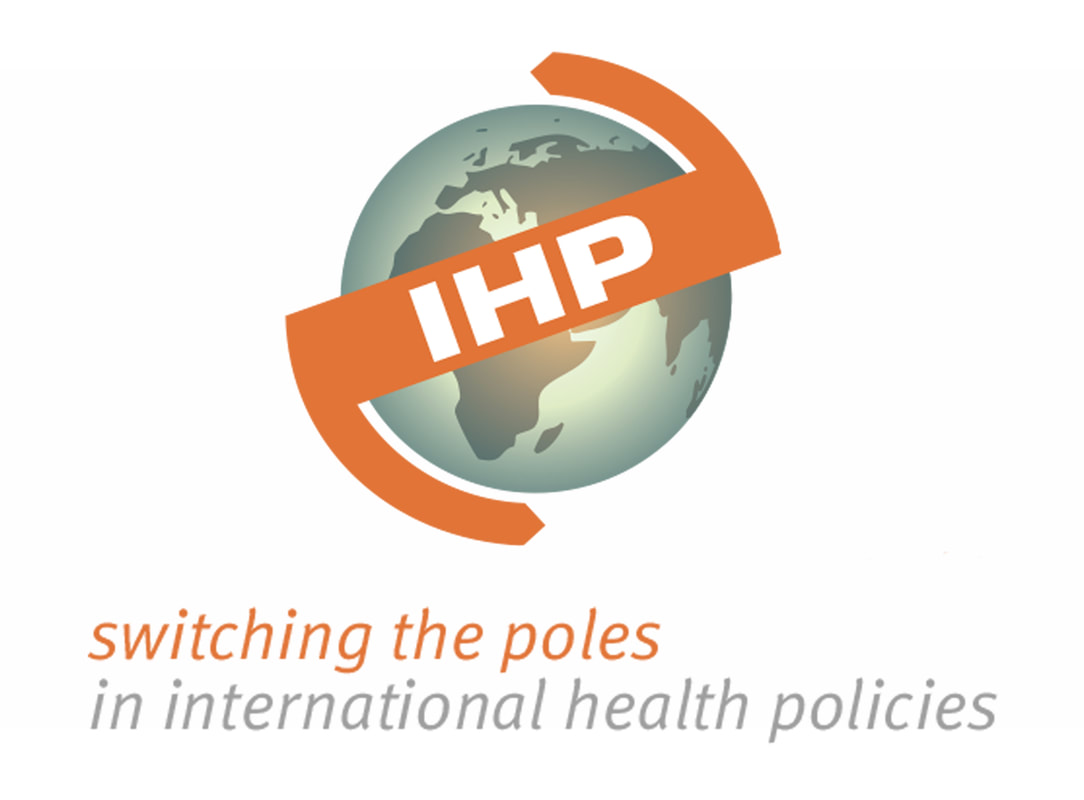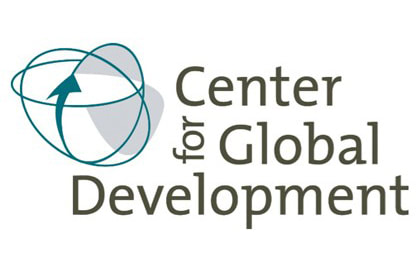As countries implement health financing reforms to advance towards universal health coverage (UHC) goals, it becomes increasingly useful to track their health financing progress. This was highlighted by a recent workshop convened by the World Health Organization on the Health Financing Progress Matrix (HFPM) in Victoria Falls, Zimbabwe in June 2022. In this blog, we summarize several key messages from the workshop.
The HFPM is an approach that assists countries not only in tracking their health financing progress but also provides specific guidance on what they need to do, to make further improvements in health financing to achieve their health system goals. While the HFPM is relatively new, it builds on robust evidence and normative work developed through years. Rather than just being an operational tool, HFPM is more of an instrument which synthesizes systematic thinking in health financing. First, it doesn’t focus only on labels or just descriptive information about inputs, but assesses the health financing landscape in terms of functions and their impact on performance. Secondly, it transforms existing knowledge to guide critical thinking on what matters in health financing for UHC, through the desirable attributes. These are effectively a set of benchmarks which describe an ideal situation associated with progress towards UHC goals. While there’s no blueprints on how to do it, there’s evidence on what works, embedded in the nineteen desirable attributes principles. Thirdly, it informs policies through a causal relationship based on a theory of change. While the HFPM is a qualitative assessment, it builds extensively on quantitative indicators. For example, in the National Health Account we can track and observe changes in health expenditure indicators. However, on their own, indicators cannot explain why these changes happen.
Playing an instrument should be relatively simple, all you need to do is: “touch the right key at the right time and the instrument will play itself”. Contextualized to the HFPM, what you need to do is: a) identify priority health financing policy issues in your country and b) the right timing to conduct the assessment so that it feeds into health financing policy processes. However, this applies when thinking in terms of the bigger picture. Health systems are complex and what emerged from the training workshop is that different but interconnected elements linked to strategic and implementation issues need to be carefully considered when conducting a HFPM in countries.
Strategic issues
During the workshop, three key strategic issues stood out.
1. Development of capacity to carry out the HFPM
The need to develop capacity across the continent, not only for the HFPM but also health financing in general, was emphasized by participants. Countries are at varying levels in terms of health financing capacity, hence it would be useful for each country to first consider mapping out their capacity needs and then take the necessary steps in closing in on the existing health financing capacity gaps. One way of ensuring that capacity development is sustainable is through incorporation of the HFPM into existing health financing modules offered by curriculums of various training institutions. Support from different actors in capacity building was seen to be necessary especially in the initial stages before institutionalization of the HFPM within countries occurs.
“We need to develop our local capacities in conducting the HFPM assessment. I would be personally interested in getting a deep dive and develop my capacities in conducting a HFPM and also interested in other trainings that WHO offers in health financing.” Health Economist, MoH Botswana.
2. Institutionalization of HFPM is key
It is critical for countries to not only understand why the HFPM is important to them but also to take up ownership of it. The participants highlighted the need to make sure that governments are driving the process. Another critical issue highlighted was the need to enhance momentum in the uptake of the HFPM particularly by linking and feeding HFPM assessments into to policy cycles (e.g., a new Health Financing strategy; review of an existing Health Financing strategy; Monitoring & Evaluation framework). A quote below by one of the workshop participants highlights a practical example of how the HFPM can be strategically plugged into a policy cycle. The role of advocacy groups to create the HFPM’s demand as well as increase pressure on governments for its’ uptake was also viewed as important.
“Eswatini is now in the process of finalizing the NHA reporting and is planning to develop a health financing strategy in 2022 supported by the World Bank. A HFPM assessment would be helpful in informing the strategy and since we already have a Technical Working Group which can oversee the process we could benefit of training our local staff. “Planning Officer, MoH Eswatini
3. There is potentially a big research agenda around the HFPM
A systematic literature review was conducted during the development and design of the HFPM to ensure that it is evidence-based. However, scope for additional research was highlighted in the workshop. Potential evidence needs include strengthening the evidence base for causal links between the nineteen health financing desirable attributes and health financing goals, refining the attributes, and exploring the interdependencies across the attributes. It was also felt that cross-country synthesis of the findings from countries that have already employed the HFPM would be quite valuable. There is a need to enhance research uptake and countries need to consider how to develop a research agenda that can support HF policies in countries. The role of academia in this then becomes very important.
Implementation issues
The workshop deep-dived into the practical steps taken to carry out the assessment including the roles of various actors in its implementation. Different actors can be engaged in the implementation of HFPM. For example, academia could be useful in driving the research agenda while the ministries of health would take ownership of the HFPM and push for uptake of the findings into policies. It would be important for the political class to understand the HFPM for legislative purposes, particularly where findings may indicate the need for more resources.
1. Shared Experiences show that HFPM implementation is a systematic process
During the workshop, we got to learn from a few countries that had applied the HFPM such as Sierra Leone, Georgia, Uganda and Ethiopia. Sharing of country experiences brought out the fact that the HFPM implementation is a systematic process. This means that the process is replicable across countries which increases the validity of the findings. We also learned that it was relatively easy and quick to use from the shared experiences. The workshop participants derived great value from the shared experiences and proposed the need to develop a community of practice to enhance cross-learning among countries which would in turn increase motivation in application of the HFPM.
“Having a community of practice where we can learn from other countries experiences would be a great incentive for us to join and be active on it”, Health Economist, MoH Malawi.
2. Implementing the HFPM is an inclusive process which enhances country ownership
Additionally, implementing the HFPM is an inclusive process that seeks to involve stakeholders across various arenas within the health sector. This enhances co-development and co-production and therefore eventual ownership of the findings.
3. External review process enhances the validity of the findings
Finally, the external peer review process, in addition to an internal one, stood out in enhancing the validity of the findings from the HFPM. An external review process can be undertaken by individuals from within or without the country provided they were not part of the core team conducting the assessments. This minimizes possible bias. A practical example of how an external review process was conducted in Mauritius was shared with the team which enabled the participants to appreciate the intricacies of such a process.
Future developments
A few thoughts stood out with regards to the technical, strategic and implementation points of discussion of the HFPM. First, the endless debate among the participants on the choice of the word tool, instrument or approach. While some of the participants felt that these descriptions could be used interchangeably, a consensus was finally reached upon that the HFPM was simply not just another tool.
Bringing together a diverse group of participants from across the continent with differing areas of expertise helped the participants reflect on the potential role of each actor in terms of taking forward the HFPM. Some of the key things that were emphasized included the importance of political buy in as well as critical thinking into fitting the HFPM within country processes.
By the end of the workshop, the role of each different actor and how they could plug in, in taking forward the HFPM was quite clear. Being in academia myself, what stood out was that academia is a key resource for country teams to guide research processes around the HFPM such as strengthening the evidence base for true causal links between the health financing desirable attributes and health financing goals, refining the attributes, exploring the interdependencies across the attributes and finally dissemination of HFPM findings.







